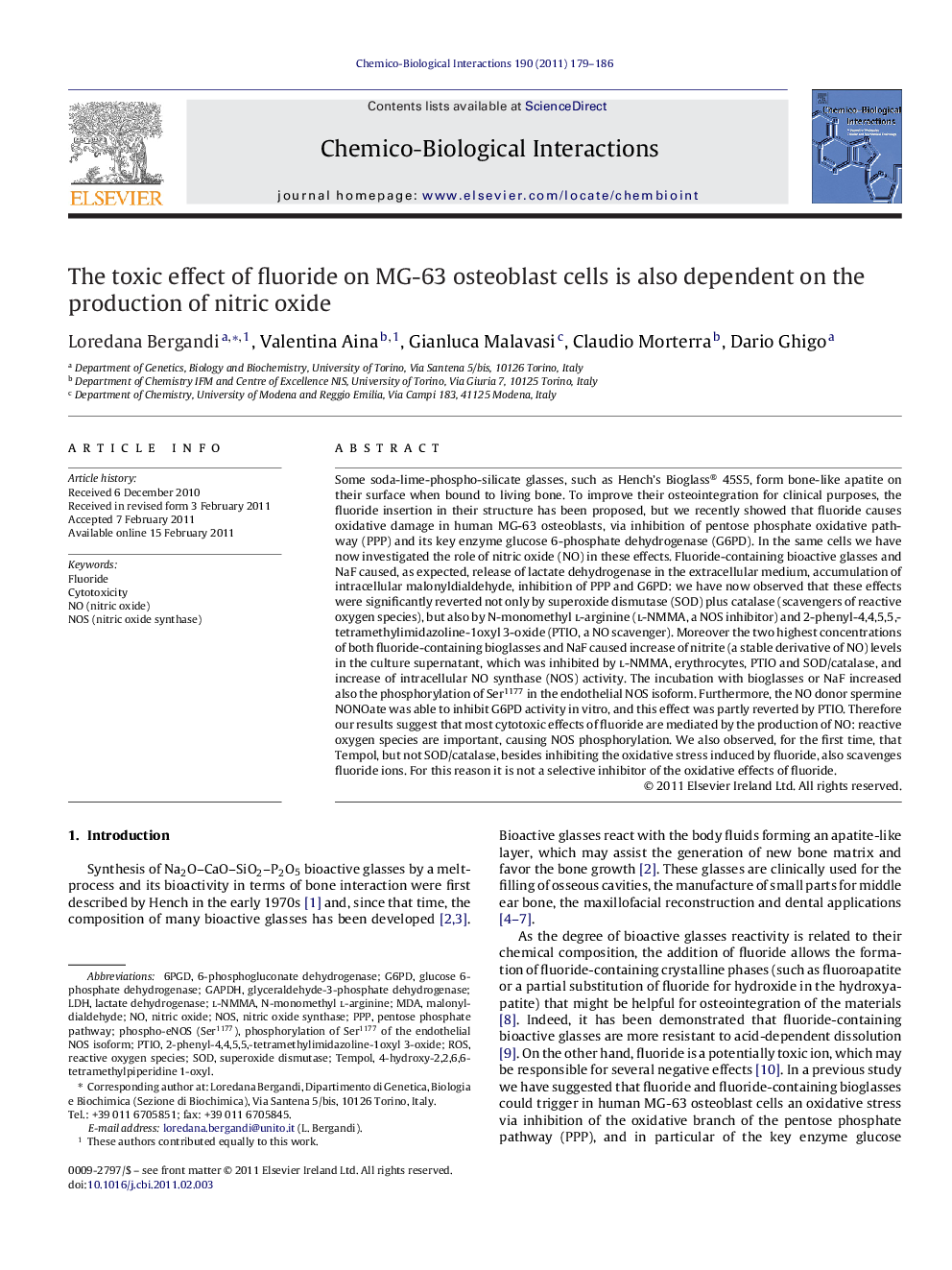| کد مقاله | کد نشریه | سال انتشار | مقاله انگلیسی | نسخه تمام متن |
|---|---|---|---|---|
| 2580931 | 1561644 | 2011 | 8 صفحه PDF | دانلود رایگان |

Some soda-lime-phospho-silicate glasses, such as Hench's Bioglass® 45S5, form bone-like apatite on their surface when bound to living bone. To improve their osteointegration for clinical purposes, the fluoride insertion in their structure has been proposed, but we recently showed that fluoride causes oxidative damage in human MG-63 osteoblasts, via inhibition of pentose phosphate oxidative pathway (PPP) and its key enzyme glucose 6-phosphate dehydrogenase (G6PD). In the same cells we have now investigated the role of nitric oxide (NO) in these effects. Fluoride-containing bioactive glasses and NaF caused, as expected, release of lactate dehydrogenase in the extracellular medium, accumulation of intracellular malonyldialdehyde, inhibition of PPP and G6PD: we have now observed that these effects were significantly reverted not only by superoxide dismutase (SOD) plus catalase (scavengers of reactive oxygen species), but also by N-monomethyl l-arginine (l-NMMA, a NOS inhibitor) and 2-phenyl-4,4,5,5,-tetramethylimidazoline-1oxyl 3-oxide (PTIO, a NO scavenger). Moreover the two highest concentrations of both fluoride-containing bioglasses and NaF caused increase of nitrite (a stable derivative of NO) levels in the culture supernatant, which was inhibited by l-NMMA, erythrocytes, PTIO and SOD/catalase, and increase of intracellular NO synthase (NOS) activity. The incubation with bioglasses or NaF increased also the phosphorylation of Ser1177 in the endothelial NOS isoform. Furthermore, the NO donor spermine NONOate was able to inhibit G6PD activity in vitro, and this effect was partly reverted by PTIO. Therefore our results suggest that most cytotoxic effects of fluoride are mediated by the production of NO: reactive oxygen species are important, causing NOS phosphorylation. We also observed, for the first time, that Tempol, but not SOD/catalase, besides inhibiting the oxidative stress induced by fluoride, also scavenges fluoride ions. For this reason it is not a selective inhibitor of the oxidative effects of fluoride.
Journal: Chemico-Biological Interactions - Volume 190, Issues 2–3, 25 April 2011, Pages 179–186